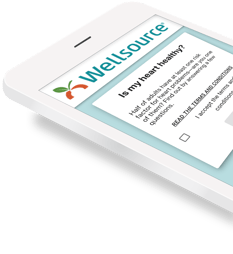Every February I start to notice this phenomenon: hearts in my inbox. Notes of appreciation in my mail. Social media ads about making my heart go pitter-patter. No, I’m not talking about Valentine’s Day. I’m talking about American Heart Month, and the influx of promotions I see from doctors’ offices, health systems, and population health and wellness practitioners.
Health awareness months or national health observances are a great way to make the most of increased public awareness of health conditions and get the word out about your program’s service-line specialties. And while there is a calendar full of health awareness months, February’s American Heart Month is one of the bigger and more established public awareness efforts.
We recognize American Heart Month to raise awareness of cardiovascular disease, the number one cause of death in America. For health systems, hospitals, and clinics, this can be a great opportunity to drive awareness of your treatment options and get patients in for preventive and episodic care.
But how can you build a patient acquisition campaign that promotes preventive care, encourages check-ups, and educates the public on your treatment facilities? I’ve worked directly with clients to help build awareness campaigns that convert. Here are 3 steps I always recommend they consider as they build their campaigns.
 STEP ONE: Understand your heart health patient audience to craft messages that resonate
STEP ONE: Understand your heart health patient audience to craft messages that resonate
The first thing to consider when building a service-line awareness campaign is your audience. Understanding your patient population will be critical in selecting which marketing channels to use, which messages will resonate, and what actions you’re encouraging patients to take following your campaign.
Awareness and education campaigns are most effective when they feel relevant and personalized to the patient. Here are just a few things to consider:
- Demographic information, such as age, race, sex.
- Lifestyle and health habits, such as diet, weight, exercise, smoking, or alcohol use.
- Social determinants of health, such as access to affordable produce, socioeconomic conditions, or environmental concerns.
Each of the above may influence their risk of heart conditions and how you might target the message and tone of your creative ads.
The best way to build messages that resonate is to be authentic to your brand, and personal in your outreach.
For example, one of our clients recently ran a program targeting women ages 55-80. After considering the motivation and possible barriers this target group might have in common, they decided to use self-care messaging in their creative to drive activation and action. In two months the campaign generated $1.39M in total charges (Read the full case study here). By truly understanding their audience and crafting messaging that resonates, they were able to provide hundreds of women the cardiovascular care they needed.
Here are some creative campaign examples to help you get started:
- National Heart, Lung, and Blood Institute Tip Sheet: 25 Ways to Take Part in Heart Month (PDF)
- The American Heart Association Move More Together Challenge, or National Wear Red Day
- Wellsource tip sheet: 8 digital marketing tactics to promote your cardiology program during American Heart Month
 STEP TWO: Choose promotion channels for your heart health awareness campaign
STEP TWO: Choose promotion channels for your heart health awareness campaign
The channels you choose for your promotion will depend on your audience. Where is your target audience most engaged? How do they prefer to receive information? Your audience is already looking for information on their health—connect with them. Some channel-specific best practices to consider:
Email marketing. Email is still an effective channel for delivering a message, especially among certain age and demographic groups. Provide condition-specific newsletters and tips that cater to the audience’s concerns. And don’t ignore your existing patient roster with re-targeting efforts. If you have health risk data available, send targeted messages to the high-risk segment of your population that might most benefit from treatment.
Pay-per-click. A 2020 consumer survey from Doctor.com revealed that patients rely on online resources 2x more than they do referrals, and 83% use search engines to find their healthcare provider. Paid ads are your way to connect with patients actively searching for care. For health awareness campaigns like heart health month, be sure to use location targeting focused on the area you serve, optimize landing pages to match the ad copy, and think beyond keywords to search intent. Why is the person searching for a particular phrase or question? Will the ad and landing page help answer their questions or inform them of your services?
Social media. Capitalize on the existing Heart Health Month hashtags and social media efforts as part of your overall outreach. Begin with social listening to understand the kinds of conversations taking place. Build organic engagement by being present in the conversation. And have a plan to answer questions that might come up. Social media ads should be personalized to the audience and direct clicks to landing pages with more information specific to heart health concerns.
 STEP THREE: Use engaging digital experiences to convert website sessions to booked appointments
STEP THREE: Use engaging digital experiences to convert website sessions to booked appointments
Online advertising, social media, and email campaigns help drive traffic to your website, but the work doesn’t end there. This is the most critical step of the campaign—offering an engaging experience to convert visitors to your site into your next heart health screening.
A first step is to treat your website like the digital front door to your facility. This means ensuring your website design is mobile-friendly, interactive, and easy to navigate. Build out informational pages on heart conditions. Provide FAQs on the services you offer. Build profiles of the staff members a patient might meet when they come in for care.
Your promotional efforts should also offer experiences beyond scheduling an appointment. You can’t expect prospective patients to hit a web page ready to book an appointment or screening. They may need more information, an introduction to the cardiology program or your team, and resources to further educate them on heart health conditions, such as an assessment that helps them better understand their condition.
Success depends on producing informative, engaging content—and serving it up to patients in a way that will get them to opt-in.
Health risk assessments to engage and convert cardiology service-line visits
 As you consider your efforts for American Heart Month, ask yourself what interactive, informative experiences you can provide.
As you consider your efforts for American Heart Month, ask yourself what interactive, informative experiences you can provide.
Offering a health assessment helps patients self-identify their risk of developing heart issues, educates them as to the lifestyle factors that may contribute to their risk, and guides them to take the next step in their health journey.
Wellactivate condition-specific health assessments are an engaging tool that gives patients a low-pressure opportunity to learn more about their specific health risks and schedule appropriate care.









